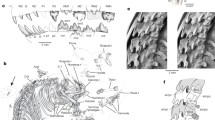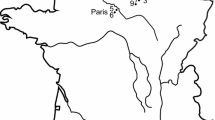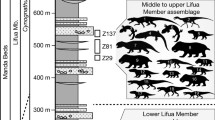Abstract
New discoveries of fossil birds belonging to the Jehol Biota uncovered from Lower Cretaceous lacustrine deposits in northeastern China continue to greatly enrich our understanding of the first major avian radiation. The exceptional preservation of some fossils provides a rare chance to discuss many biological issues that are usually impossible to address in paleontological studies, such as: the ossification pattern of the sternum in the extinct group Enantiornithes, which is unlike that of modern birds and all other archosaurs; the discovery of preserved crop, gizzard, and intestinal contents in several clades which suggest that a near-modern digestive tract including specialized crop morphologies evolved early during avian evolution; and the rare preservation of ovarian follicles which support hypotheses that the right ovary was lost in Aves due to the limitations of powered flight. Together, these data allow a partial reconstruction of the biology of Aves very close to its origin. While no skeletal or integumentary features are recognized to define Aves, we identify two possible soft tissue features that may biologically define Aves relative to other amniotes: the presence of a crop and the loss of the right ovary.



Similar content being viewed by others
References
Buffetaut E et al (2005) Minute theropod eggs and embryo from the Lower Cretaceous of Thailand and the dinosaur-bird transition. Naturwissenschaften 92:477–482. doi:10.1007/s00114-005-0022-9
Chiappe LM (1995) The phylogenetic position of the Cretaceous birds of Argentina: Enantiornithes and Patagopteryx deferrariisi. In: Peters DS (ed) Acta Palaeornithologica, vol 181. Courier Forschungsinstitut Senckenberg, Senckenberg, pp 55–63
Chiappe LM, Ji S, Ji Q, Norell MA (1999) Anatomy and systematics of the confuciusornithidae (Theropoda: Aves) from the late Mesozoic of Northeastern China. Bull Am Mus Nat Hist 242:1–89
Chiappe LM, Ji S, Ji Q (2007) Juvenile birds from the early cretaceous of China: implications for enantiornithine ontogeny. Am Mus Novit 3594:1–46. doi:10.1206/0003-0082(2007)3594[1:JBFTEC]2.0.CO;2
Chinsamy A, Elzanowski A (2001) Evolution of growth pattern in birds Nature 412:402–403. doi:10.1038/35086650
Chinsamy A, Chiappe LM, Dodson P (1995) Mesozoic avian bone microstructure: physiological implications. Paleobiology 21:561–574
Dalsätt J, Zhou Z, Zhang F, Ericson PGP (2006) Food remains in Confuciusornissanctus suggest a fish diet. Naturwissenschaften 93:444–446. doi:10.1007/s00114-006-0125-y
de Beer G (1954) Archaeopteryx lithographica, a study based upon the British museum specimen. Br Mus Publ 224:1–68
Elzanowski A (1999) A comparison of the jaw skeleton in theropods and birds, with a description of the palate in the Oviraptoridae. In: Olson SL, Wellnhofer P, Mourer-Chauviré C, Steadman DW, Martin LD (eds) Avian Paleontology at the Close of the 20th Century: Proceedings of the 4th International Meeting of the Society of Avian Paleontology and Evolution, vol 89. Washington, DC, 4–7 June 1996, pp 311–323
Gao C, Chiappe LM, Meng Q, O’Connor J, Wang X, Cheng X, Liu J (2008) A new basal lineage of early cretaceous birds from China and its implications on the evolution of the avian tail. Palaeontology 51:775–791. doi:10.1111/j.1475-4983.2008.00793.x
Gao C-H, Morschhauser EM, Varricchio DJ, Liu J-Y, Zhao B (2012) A second soundly sleeping dragon: new anatomical details of the Chinese troodontid Mei long with implications for phylogeny and taphonomy. PLoS ONE 7:e45203. doi:10.1371/journal.pone.0045203
Gauthier J (1986) Saurischian monophyly and the origin of birds. In: Padian K (ed) The origin of birds and the evolution of flight, vol 8. Memoirs, California Academy of Sciences, San Francisco, pp 1–55
Gill FB (2007) Ornithology, 3rd edn. Freeman, New York
Grellet-Tinner G, Chiappe LM (2004) Dinosaur eggs and nesting: implications for understanding the origin of birds. In: Currie PJ, Koppelhus EB, Shugar MA, Wright JL (eds) Feathered dragons: studies on the transition from dinosaurs to birds. Indiana University Press, Bloomington, pp 185–214
Griffiths P (1993) The question of Compsognathus eggs. Rev Paleobiol Vol Spéc 7:85–94
Griffiths PJ (1999) Compsognathus eggs revisited. In: Bravo AM, Reyes T (eds) 1r Congrés Internacional sobre Ous i Cries de Dinosaures, Extended Abstracts. Isona i Conca Dellà, Catalonia, pp 77–83
Hou L, Zhonghe Z, Martin LD, Feduccia A (1995) A beaked bird from the Jurassic of China. Nature 377:616–618
Huchzermeyer FW (2003) Crocodiles: biology, husbandry and diseases. CABI, Wallingford
Ji Q, Currie PJ, Norell MA, Ji S-A (1998) Two feathered dinosaurs from northeastern China. Nature 393:753–761
Li Z-H, Zhou Z-H, Wang M, Clarke JA (2014) A new specimen of large-bodied basal enantiornithine Bohaiornis from the early cretaceous of China and the inference of feeding ecology in Mesozoic birds. J Paleontol 88:99–108
Louchart A, Viriot L (2011) From snout to beak: the loss of teeth in birds. Trends Ecol Evol 26:663–673
Lü J, Dong Z, Azuma Y, Barsbold R, Tomida Y (2002) Oviraptorosaurs compared to birds. In: Zhou Z, Zhang F (eds) Proceedings of the 5th Symposium of the Society of Avian Paleontology and Evolution, Beijing, 1–4 June 2000. Science Press, Beijing, pp 175–189
Marsh OC (1880) Odontornithes: a monograph on the extinct toothed birds of North America. Prof Pap Eng Dep US Army 18:1–201
Maryanska T, Osmólska H, Wolsan M (2002) Avialan status for Oviraptorosauria. Acta Palaeontol Pol 47:97–116
Mayr G, Manegold A (2013) Can ovarian follicles fossilize? Nature 499:E1
Mayr G, Pohl B, Peters DS (2005) A well-preserved Archaeopteryx specimen with theropod features. Science 310:1483–1486. doi:10.1126/science.1120331
Nixon KC, Carpenter JM, Stevenson DW (2003) The Phylocode is fatally flawed, and the “Linnaean” system can easily be fixed. Bot Rev 69:111–120
Norell MA, Makovicky PJ (2004) Dromaeosauridae. In: Weishampel DB, Dodson P, Osmólska H (eds) The Dinosauria, 2nd edn. University of California Press, Berkeley, pp 196–209
O’Connor J, Chiappe LM (2011) A revision of enantiornithine (Aves: ornithothoraces) skull morphology. J Syst Palaeontol 9:135–157
O’Connor JK, Sullivan C (2014) Reinterpretation of the Early Cretaceous maniraptoran (Dinosauria: theropoda) Zhongornis haoae as a scansoriopterygid-like non-avian, and morphological resemblances between scansoriopterygids and basal oviraptorosaurs. Vertebr Palasiat 52:3–30
O’Connor JK, Chiappe LM, Bell A (2011a) Pre-modern birds: avian divergences in the Mesozoic. In: Dyke GD, Kaiser G (eds) Living dinosaurs: the evolutionary history of birds. Wiley, New Jersey, pp 39–114
O’Connor JK, Xu X, Zhou Z-H (2011b) Additional specimen of Microraptor provides unique evidence of dinosaurs preying on birds. Proc Natl Acad Sci USA. doi:10.1073/pnas.1117727108
O’Connor JK, Zheng X-T, Wang X-L, Wang Y, Zhou Z-H (2013a) Ovarian follicles shed new light on dinosaur reproduction during the transition towards birds. Natl Sci Rev. doi:10.1093/nsr/nwt012
O’Connor JK, Zhou Z-H, Zheng X-T (2013b) Zheng et al. reply. Nature 499:E1–E2
O’Connor JK, Wang M, Zheng X-T, Wang X-L, Zhou Z-H (2014a) The histology of two female early cretaceous birds. Vertebr Palasiat 52:112–128
O’Connor JK, Wang M, Zheng X-T, Zhou Z-H (2014b) Reply to Foth: preserved cartilage is rare but not absent: troodontid sternal plates are absent, not rare. Proc Natl Acad Sci USA 111:E5335
Osmólska H, Currie PJ, Barsbold R (2004) Oviraptorosauria. In: Weishampel DB, Dodson P, Osmólska H (eds) The dinosauria, 2nd edn. University of California Press, Berkeley, pp 165–183
Sato T, Chang Y-N, Wu X-C, Zelenitsky DA, Hsiao Y-F (2005) A pair of shelled eggs inside a female dinosaur. Science 308:375. doi:10.1126/science.1110578
Starck JM (1993) Evolution of avian ontogenies. In: Power DM (ed) Current ornithology, vol 10. Plenum, New York, pp 275–366
Starck JM, Ricklefs RE (1998) Patterns of development: the altricial-precocial spectrum. In: Starck JM, Ricklefs RE (eds) Avian growth and development. Oxford University Press, New York City, pp 3–30
Turner AH, Pol D, Clarke JA, Erickson GM, Norell MA (2007) A basal dromaeosaurid and size evolution preceding avian flight. Science 317:1378–1381. doi:10.1126/science.1144066
Turner AH, Makovicky PJ, Norell MA (2012) A review of dromaeosaurid systematics and paravian phylogeny. Bull Am Mus Nat Hist 371:1–206
Varricchio DJ, Jackson F, Borkowski JJ, Horner JR (1997) Nest and egg clutches of the dinosaur Troodon formosus and the evolution of avian reproductive traits. Nature 385:247–250
Von Blötzheim G (1958) Zur morphologie und ontogenese von schultergurtel, sternum und becken von Struthio, Rhea und Dromiceius. Rev Suisse Zool 65:609–772
Wings O (2007) A review of gastrolith function with implications for fossil vertebrates and a revised classification. Acta Palaeontol Pol 52:1–16
Witmer LM (2002) The debate on avian ancestry: phylogeny, function, and fossils. In: Chiappe LM, Witmer LM (eds) Mesozoic birds: above the heads of dinosaurs. University of California Press, Berkeley, pp 3–30
Xing L-D et al (2013) Piscivory in the feathered dinosaur Microraptor. Evolution 67:2441–2445
Xu X, Norell MA (2004) A new troodontid dinosaur from China with avian-like sleeping posture. Nature 431:838–841. doi:10.1038/nature02898
Xu X, Zhou Z, Wang X, Kuang X, Du X (2003) Four-winged dinosaurs from China. Nature 421:335–340
Xu X, Ma Q-Y, Hu D-Y (2010a) Pre-Archaeopteryx coelurosaurian dinosaurs and their implications for understanding avian origins. Chin Sci Bull 55:3971–3977
Xu X, Zheng X-T, You H-L (2010b) Exceptional dinosaur fossils show ontogenetic development of early feathers. Nature 464:1339–1341
Zhang F, Zhou Z, Dyke GJ (2006) Feathers and ‘feather-like’ integumentary structures in Liaoning birds and dinosaurs. Geol J 41:395–404. doi:10.1002/gj.1057
Zhang F, Zhou Z, Benton MJ (2008a) A primitive confuciusornithid bird from China and its implications for early avian flight. Sci China D 51:625–639. doi:10.1007/s11430-008-0050-3
Zhang F-C, Zhou Z-H, Xu X, Wang X-L, Sullivan C (2008b) A bizarre Jurassic maniraptoran from China with elongate ribbon-like feathers. Nature 455:1105–1108. doi:10.1038/npre.2008.2326.1
Zhang F-C et al (2010) Fossilized melanosomes and the colour of Cretaceous dinosaurs and birds. Nature 463:1075–1078
Zheng X-T, Martin LD, Zhou Z-H, Burnham DA, Zhang F-C, Miao D (2011) Fossil evidence of avian crops from the early cretaceous of China. Proc Natl Acad Sci USA 108:15904–15907
Zheng X-T, Wang X-L, O’Connor JK, Zhou Z-H (2012) Insight into the early evolution of the avian sternum from juvenile enantiornithines. Nature Commun. doi:10.1038/ncomms2104
Zheng X-T, O’Connor JK, Huchzermeyer FW, Wang X-L, Wang Y, Wang M, Zhou Z-H (2013) Preservation of ovarian follicles reveals early evolution of avian reproductive behaviour. Nature 495:507–511
Zheng X-T, O’Connor JK, Huchzermeyer FW, Wang X-L, Wang Y, Zhang X-M, Zhou Z-H (2014a) New specimens of Yanornis indicate a piscivorous diet and modern alimentary canal. PLoS ONE 9:e95036. doi:10.1371/journal.pone.0095036
Zheng X-T, O’Connor JK, Wang X-L, Wang M, Zhang X-M, Zhou Z-H (2014b) On the absence of sternal elements in Anchiornis (Paraves) and Sapeornis (Aves) and the complex early evolution of the avian sternum. Proc Natl Acad Sci USA 111:13900–13905
Zhou Z (2006) Evolutionary radiation of the Jehol Biota: chronological and ecological perspectives. Geol J 41:377–393. doi:10.1002/gj.1045
Zhou Z, Hou L (2002) The discovery and study of Mesozoic birds in China. In: Chiappe LM, Witmer LM (eds) Mesozoic birds: above the heads of dinosaurs. University of California Press, Berkeley, pp 160–183
Zhou Z-H, Wang X-L (2000) A new species of Caudipteryx from the Yixian formation of Liaoning, northeast China. Vertebr Palasiat 38:111–127
Zhou Z, Zhang F (2002) A long-tailed, seed-eating bird from the Early Cretaceous of China. Nature 418:405–409. doi:10.1038/nature00930
Zhou Z, Zhang F (2003) Jeholornis compared to Archaeopteryx, with a new understanding of the earliest avian evolution. Naturwissenschaften 90:220–225
Zhou Z, Zhang F (2004) A precocial avian embryo from the lower cretaceous of China. Science 306:653
Zhou Z-H, Zhang F-C (2006a) A beaked basal ornithurine bird (Aves, ornithurae) from the lower cretaceous of China. Zool Scr 35:363–373. doi:10.1111/j.1463-6409.2006.00234.x
Zhou Z-H, Zhang F-C (2006b) Mesozoic birds of China—a synoptic review. Vertebr Palasiat 44:74–98
Zhou Z, Jin F, Zhang J (1992) Preliminary report on a Mesozoic bird from Liaoning, China. Chin Sci Bull 37:1365–1368
Zhou Z-H, Wang X-L, Zhang F-C, Xu X (2000) Important features of Caudipteryx—evidence from two nearly complete new specimens. Vertebr Palasiat 38:242–254
Zhou Z, Barrett PM, Hilton J (2003) An exceptionally preserved Lower Cretaceous ecosystem. Nature 421:807–814
Zhou Z, Clarke J, Zhang F, Wings O (2004) Gastroliths in Yanornis: an indication of the earliest radical diet-switching and gizzard plasticity in the lineage leading to living birds. Naturwissenschaften 91:571–574. doi:10.1007/s00114-004-0567-z
Zhou S, Zhou Z-H, O’Connor JK (2013a) A new piscivorous ornithuromorph from the Jehol Biota. Hist Biol 26:1–11. doi:10.1080/08912963.2013.819504
Zhou S, Zhou Z-H, O’Connor JK (2013b) Anatomy of the Early Cretaceous Archaeorhynchus spathula. J Vertebr Paleontol 33:141–152
Zhou S, O’Connor JK, Wang M (2014) A new species from an ornithuromorph dominated locality of the Jehol Group. Chin Sci Bull 59:1–13. doi:10.1007/s11434-014-0669-8
Acknowledgments
We thank Gerald Mayr and Xing Xu for organizing the symposium dedicated to fossil birds at the 26th International Ornithological Congress. We also thank Gerald Mayr and one anonymous reviewer for their comments on an earlier version of this manuscript. This research is supported by the National Basic Research Program of China (973 Program, 2012CB821906), the National Natural Science Foundation of China (41172020, 41372014, 41172016), and the Chinese Academy of Sciences and the Chinese Academy of Sciences.
Author information
Authors and Affiliations
Corresponding author
Additional information
Communicated by E. Matthysen.
Rights and permissions
About this article
Cite this article
O’Connor, J., Zhou, Z. Early evolution of the biological bird: perspectives from new fossil discoveries in China. J Ornithol 156 (Suppl 1), 333–342 (2015). https://doi.org/10.1007/s10336-015-1222-5
Received:
Revised:
Accepted:
Published:
Issue Date:
DOI: https://doi.org/10.1007/s10336-015-1222-5




